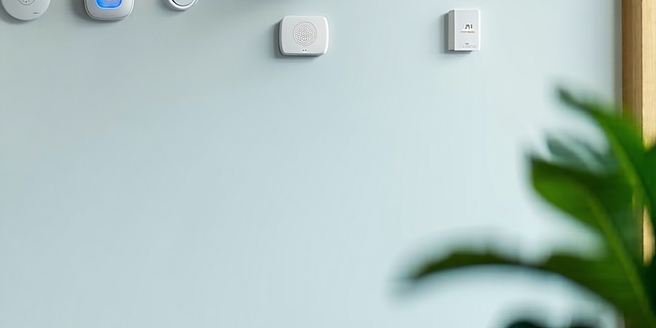
Introduction to Smart Home Sensors
Smart home sensors are rapidly becoming essential for those seeking enhanced home safety and peace of mind. These sensors encompass a variety of devices designed to detect and respond to environmental changes. From motion detectors and smoke alarms to carbon monoxide sensors, they play a critical role in safeguarding homes. By integrating these sensors with a central smart home system, homeowners can monitor their residence remotely, receive real-time alerts, and take quick action when needed. This technology not only enhances security but also simplifies daily living by automating tasks such as adjusting lighting, regulating temperature, and tracking water leaks. As technology advances, smart home sensors continue to evolve, offering more sophisticated features and seamless integration with existing home systems.
Types of Sensors That Enhance Security
In the realm of smart home security, several sensor types stand out for their effectiveness in enhancing safety. Motion sensors detect unexpected movement and trigger alarms or notifications, deterring potential intruders. Door and window sensors monitor entry points and alert homeowners of unauthorized access. Glass break sensors are tuned to recognize the specific frequency of breaking glass, providing an extra layer of security. Environmental sensors, such as smoke and carbon monoxide detectors, ensure safety from fire and toxic gases. Additionally, smart cameras equipped with facial recognition and night vision offer continuous monitoring. Each sensor serves a specific purpose, and integrating multiple types creates a comprehensive security system that adapts to various threats.
Benefits of Implementing Safety Sensors
Integrating safety sensors in a smart home setup offers numerous advantages. First and foremost, they provide real-time monitoring and alert capabilities, significantly reducing response time in emergencies. This proactive approach aids in preventing incidents before they escalate into major problems, thus ensuring the safety of residents. Furthermore, these sensors can lead to lower insurance premiums, as many providers recognize the reduced risk they offer. The convenience of remote access means homeowners can keep an eye on their property from anywhere, offering peace of mind. Additionally, smart sensors contribute to energy efficiency by automating lights and climate control, resulting in cost savings over time. Overall, safety sensors enhance the protection, convenience, and energy management within a home.
How to Install and Maintain Sensors
Proper installation and maintenance of smart home sensors are crucial for optimal performance. Begin by selecting the appropriate sensors for your home’s needs, such as motion, door, or environmental sensors. Consider whether you require sensors with advanced features like temperature detection or humidity monitoring. Follow the manufacturer’s instructions carefully for installation, ensuring each sensor is strategically placed for maximum coverage and effectiveness. Wireless sensors may offer easier installation than wired ones. Once installed, regular maintenance is vital to keep the system operational. This includes checking battery levels, updating firmware, and testing sensor functionality periodically. Additionally, ensure that sensors remain clean and unobstructed by dust or household items. By adhering to these practices, homeowners can ensure their smart home sensors provide reliable safety and security.
Future Trends in Home Sensor Technology
The landscape of home sensor technology is evolving rapidly, driven by advancements in artificial intelligence and connectivity. As these technologies become more accessible, even small-scale homes can benefit from high-tech solutions. Future trends include more sophisticated AI-driven sensors capable of learning homeowners’ habits, leading to more intuitive automation and security responses. The rise of the Internet of Things (IoT) means even greater interconnectivity between devices, offering seamless integration across different platforms and systems. Biometrics, such as voice and facial recognition, are set to enhance personalized security measures. Furthermore, energy-efficient sensors that utilize low-power protocols will become the norm, supporting sustainable smart home environments. Innovations such as these promise to make smart homes smarter, safer, and more efficient than ever before.
